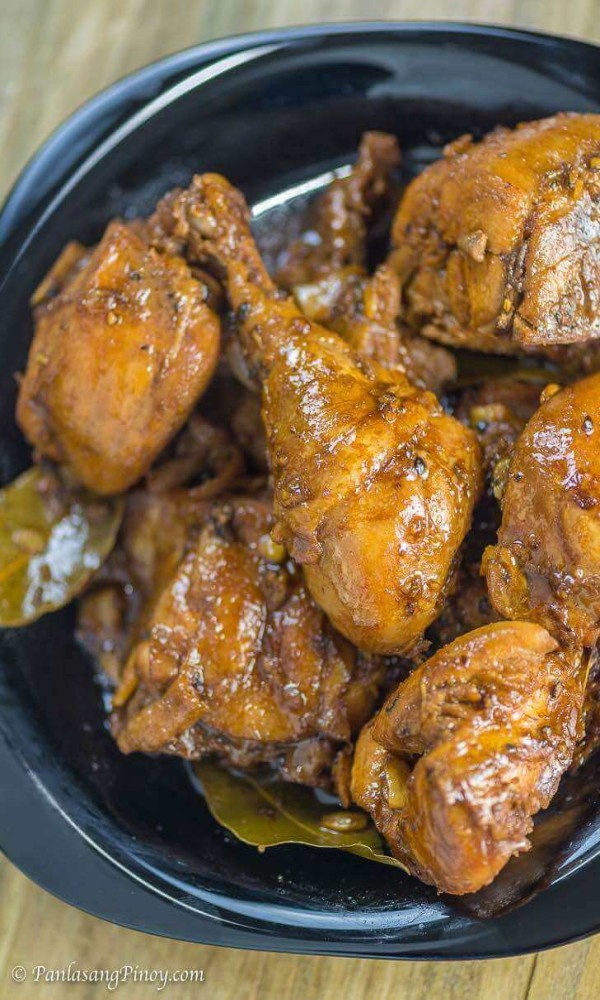Adobo, a national treasure of the Philippines, is more than just a dish; it’s a culinary cornerstone, a symbol of comfort, and a canvas for regional variations. This beloved chicken recipe boasts a rich history, dating back to the pre-colonial era, and continues to tantalize taste buds worldwide.
Here, we’ll delve into the delicious world of chicken adobo, exploring its ingredients, easy-to-follow directions, and its surprising nutritional value. Buckle up for a flavor adventure!

Ingredients:
The Protein Powerhouse: 2 lbs. chicken, cut into serving pieces (bone-in chicken thighs are a perfect choice for added flavor).
Directions:
1. The Marination Magic: In a large bowl, combine the chicken pieces, soy sauce, and half of the minced garlic. Toss well to coat the chicken evenly. Let this flavorful marinade work its magic for at least 1 hour, or even better, overnight for deeper penetration of flavors.
2. Simmering Symphony: Heat the cooking oil in a large pot or Dutch oven over medium heat. Once hot, add the remaining garlic and saute until fragrant and lightly golden.
3. Spice Up Your Life: Add the bay leaves, peppercorns, and marinated chicken to the pot. Pour in the water and bring to a boil. Reduce heat, cover the pot, and simmer for 30 minutes, or until the chicken is cooked through and tender.
4. The Vinegar Punch: Add the white vinegar to the pot and continue simmering for another 10 minutes. This allows the vinegar to infuse the chicken and slightly reduce the sauce for a more concentrated flavor.
5. Sweet Meets Savory: Stir in the sugar and salt. Taste and adjust seasonings as needed. You can add a touch more soy sauce for a bolder umami flavor, or a pinch of sugar to balance the tanginess.
6. The Grand Finale: Continue simmering, uncovered, until the sauce thickens to a desired consistency. The traditional adobo has a slightly thickened sauce, but you can reduce it further for a richer, more intense flavor.
7. Serve and Savor: Serve your delicious chicken adobo hot over steamed rice, with a side of chopped green onions for a refreshing touch. Enjoy the perfect harmony of savory, tangy, and slightly sweet flavors in every bite!
Nutrition Facts (per serving):
While chicken adobo is known for its bold flavors, it might surprise you to know that it’s relatively moderate in calories and fat. Here’s a typical breakdown per serving (based on a 4-serving recipe):
Calories: 400-500 (depending on fat content of chicken)
Conclusion
Chicken adobo is a testament to the beauty of simple ingredients coming together to create a dish that is both delicious and comforting. It’s a versatile recipe that can be easily adapted to your taste preferences. Whether you enjoy it with a classic soy sauce and vinegar base, or add a twist with coconut milk or chilies, adobo is a culinary adventure waiting to be explored. So, gather your ingredients, fire up the stove, and embark on a delightful journey into the heart of Filipino cuisine!
Frequently Asked Questions (FAQs) about Adobo:
1. What can I use instead of chicken?


